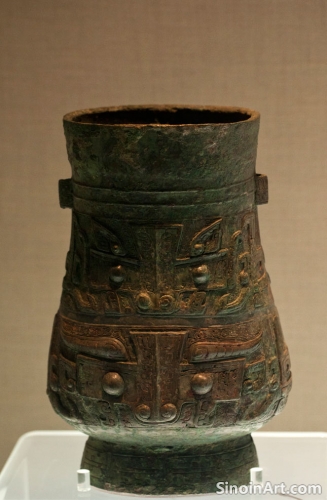Bronze Ware and the Ancient Chinese Understanding of Material Science: Alloys, Properties, and Applications
|
The creation of Chinese bronze ware required a sophisticated understanding of material science, and the ancient metalworkers had a deep knowledge of different alloys, their properties, and their specific applications, demonstrating their expertise in both artistic design and scientific knowledge. The development of bronze required both careful observation and also extensive practical experience in the metalworking arts.  The selection and mixing of different metals, particularly copper, tin, and lead, to create bronze alloys with specific properties, required precise control of temperature, timing, and the ratio of materials, demonstrating their advanced knowledge of metallurgy. The use of different alloys helped to influence both the durability and also the tone of musical instruments. The understanding of these different properties allowed for a greater flexibility in design and application.  The understanding of bronze as a stable and durable material, capable of being cast into complex shapes and decorated with intricate patterns, also helped to guide its use in a variety of applications. The understanding of bronze's unique properties helped to ensure its place as a central material in ancient China.  The study of ancient Chinese bronze ware reveals an underlying scientific curiosity and an approach to material experimentation that is truly remarkable. The knowledge that they possessed allowed them to transform the natural world into powerful and beautiful artistic creations. The integration of science and art is a key element in ancient Chinese culture. |
Tag : bronze material science, Chinese alloys, ancient metallurgy, metal properties, casting techniques
Related information
- The Symbolism in Chinese Bronze Ware: Decoding the Motifs and Patterns
- The Production and Use of Bronze in the Ancient Kingdom of Shu: The Uniqueness of Sanxingdui
- The Development of Bronze in the Spring and Autumn Period: New Forms, Techniques, and Regional Styles
- The Enduring Power of Chinese Bronze Ware: A Timeless Legacy of Art, Culture, and History
- Bronze Ware and the Representation of Power in Ancient Chinese Local Governance: Authority, Control, and Regional Identity
This article explores the symbolism in Chinese bronze ware, decoding the meaning of the taotie and other motifs, and demonstrating how these designs reflected the religious beliefs, social values, and worldview of ancient China.
This article explores the bronze ware of the ancient kingdom of Shu, highlighting the unique artifacts discovered at Sanxingdui, the distinct casting techniques, and the cultural significance of this powerful and largely independent civilization.
This article explores the development of bronze ware during the Spring and Autumn period, highlighting new forms, innovative techniques, and the rise of distinctive regional styles, reflecting the growing artistic diversity of the time.
This article reflects on the enduring power of Chinese bronze ware, emphasizing its timeless beauty, technical mastery, cultural significance, and its continuing ability to inspire awe and curiosity around the world.
This article explores the use of bronze ware to represent power in ancient Chinese local governance, highlighting its role in asserting authority, maintaining order, establishing regional identity, and demonstrating the complex interplay between local and imperial influences.